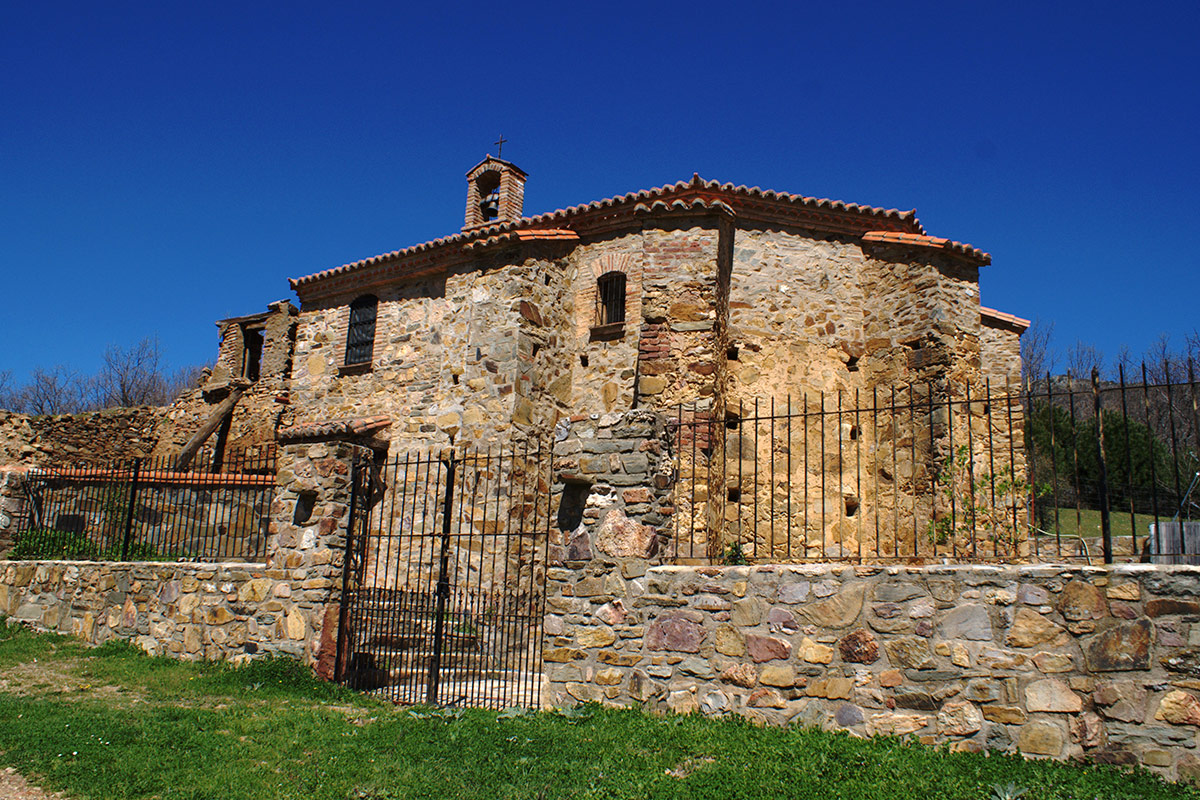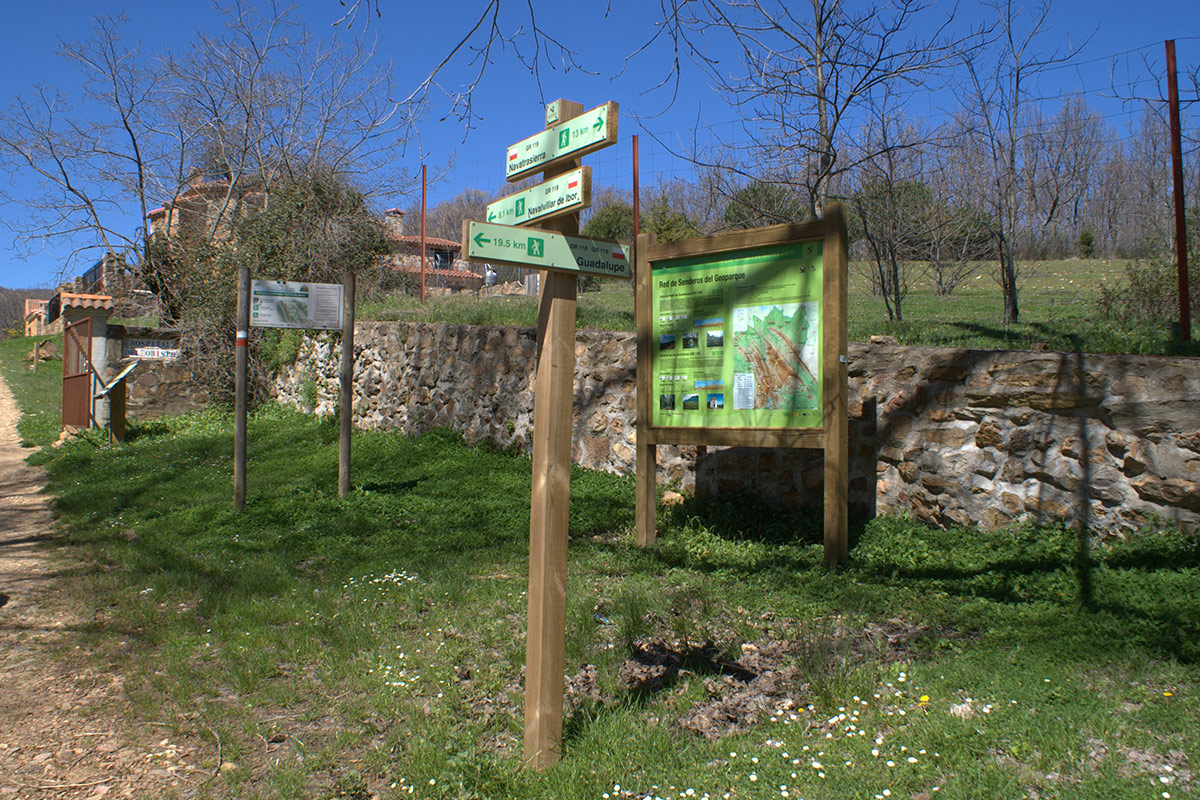



This long-distance route links the Monasterio de Yuste in the district of La Vera with the Monasterio de Guadalupe; both are of Hieronymite origin. In the Geopark it runs between the villages of Bohonal de Ibor and Guadalupe, owing to its length it is best divided into two stages with a night spent at Castañar de Ibor or Navalvillar de Ibor.

It is a demanding itinerary owing to its length and the differences in height; the altitude ranges from the 350 m at the start to the 1100 m of the Puerto del Hospital. The route begins one kilometre south of Bohonal de Ibor and enters the Geopark through the valley of the Valdeazores Stream in a landscape which alternates between olive groves and woods of cork oaks (Quercus suber) and holm oaks (Quercus ilex); it reaches the Raña de las Mesillas (geosite).
At this point the route crosses the EX 118 road to drop to the deserted spot of La Avellaneda which is the origin of the current Castañar de Ibor. This village is reached by then ascending the River Ibor with its riverside woodland studded with alders (Alnus glutinosa).

It is interesting to visit the mill on the river bank and the geosite of the Cerro de la Mina on the route itself. Moreover, owing to its proximity it is worth mentioning the Castañar Cave, the cavity with the greatest variety of aragonite speleothems in Spain, and the chestnut trees of Calabazas. Both the latter are geosites, the first being a Natural Monument and the second Outstanding Trees. The route continues towards Navalvillar de Ibor through the Garganta Salóbriga where the woodland of Pyrenean oaks (Quercus pyrenaica) begins to appear. The path reaches the former pilgrim’s hostel of the Hospital del Obispo, where it links with the Guadalupe Highroad, descending to the Puente de los Álamos (Poplars’ Bridge) on the River Ibor to make for the Chapel of El Humilladero and Guadalupe, the end of this route.
On the way you can see summer birds of prey such as the honey buzzard (Pernis apivorus), numerous woodland birds such as the long-tailed tit (Aegithalos caudatus), and mammals such as the roe deer (Capreolus capreolus).
